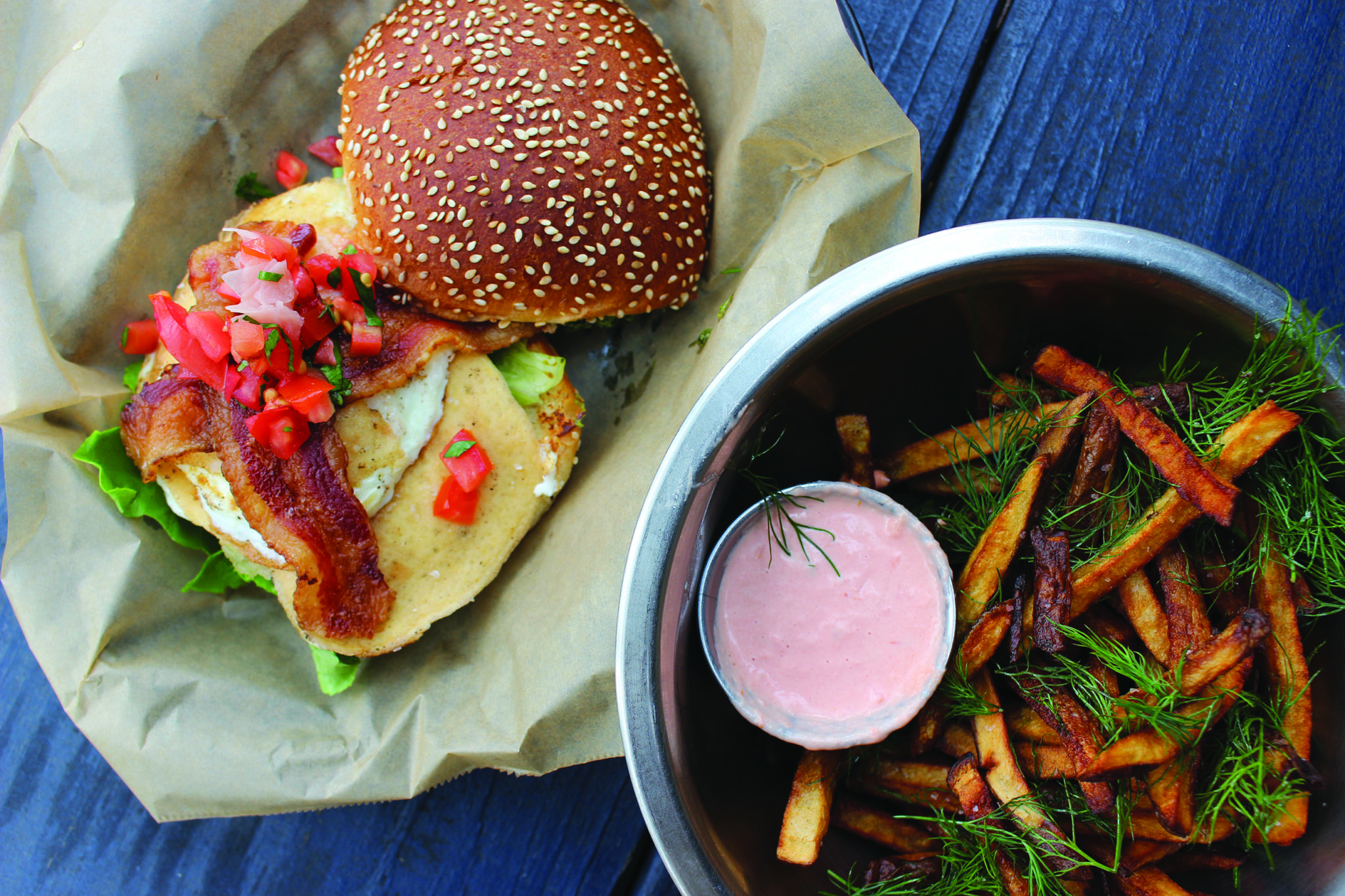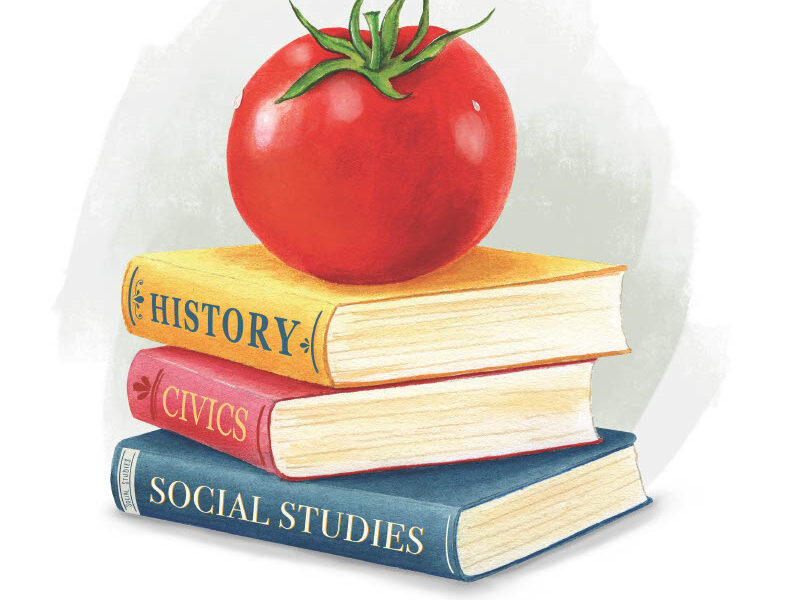Destination, Small Town A quest for inventive dining yields close, but not quite
How does a city become known for good food? Is there an instruction manual lying about in a hospitality group office or urban planning bureau somewhere? I ask because I’ve been dining in Gainesville, Florida, where I’ve lived for two years.
![]() I accompanied my fiancé, Bruce, who’s in a PhD program at the University of Florida (UF). Upon news of his acceptance, my food-oriented friends from major cities looked at me with mitigated grimaces—where would I eat? Friends and colleagues bid me good luck with wistful smiles.
I accompanied my fiancé, Bruce, who’s in a PhD program at the University of Florida (UF). Upon news of his acceptance, my food-oriented friends from major cities looked at me with mitigated grimaces—where would I eat? Friends and colleagues bid me good luck with wistful smiles.
Their trepidation wasn’t entirely about Gainesville, a city whose service industry relies heavily on the ebbs and flows of the fifty-some-odd thousand students who flow onto UF’s campus each year. They were concerned about Florida. The place where my ecologist friend watched her conference RSVPs plummet, because state scientists told her they weren’t allowed to attend events that reference climate change. The land where the Everglades are so overrun by pythons that rabbits, deer, and even bobcats are dwindling in number. The state where the shooting deaths of young black boys like Trayvon Martin and Jordan Davis caused some of my black friends to invoke near-spiritual cautionary missives. And don’t get non-Floridians started on the alligator stories, which on social media, always work their way back to a guy on meth.
Still, Gainesville has its charm. You’ve gotta be where you’re at—how can you not? It’s fine here. It’s fine. That’s what I say when my food friends—people like you, cherished reader, who explore often, eat generously, and are interested in what food can teach them—ask how I’m finding my way.
I reconnected with a writer who introduced me to her kindred spirits over wine and treats from Uppercrust, a French-inspired artisanal bakery. We tore into éclairs, tartes, croissants, and mini-cakes and no one talked about calories, so I knew I’d found my people. A serendipitous wrong turn led me to La Pasadita, a cheery strip-mall Mexican restaurant. There, I order “Mexican style” lengua, campechano, and barbacoa tacos because I prefer corn tortillas, cilantro, and onion to their default Americanized variety: flour, cheese, lettuce, and tomato. Their red mole is rich and fulfilling and their flan—oh man, it kills.
Bruce found a place called Hong Kong Deli, a bright yellow building with inept ventilation, where we became obsessed with their mala dry hot wok. The item was not listed on their takeout menu, but handwritten on paper taped to the checkout counter. Pick your own ingredients: woodsy mushrooms, bean sprouts, bean curd, tofu, zucchini, carrots, chicken, tempeh. Georgia, the petite Chinese proprietor, managed phone orders and a grill station. To make the dish, she’d mix your selections with whole chilies, onion, fennel, and garlic over high heat. Bruce placed a large order for us every Friday night and Georgia quickly learned his kind, inquisitive voice. Beef tendon Mala salad. Sichuan boiled fish. Tofu black egg. “You eat like Chinese boy!” she’d gush to him. (She never gave me any credit.)

We found other gems. Caribbean Queen is our Jamaican spot. If you request a dish that’s sold out, like brown stew chicken, they say, “It is finished!” Public & General, a casual pub, offers fun draft beer selections and a market-driven menu with daily specials. Recent visits served up a runny egg sandwich with dill fries, braised short rib over green lentils, and fried triggerfish with pickled slaw. Embers grills a solid steak and their sister business, Spark, mixes a fine Martinez. Garlic & Ginger, a Korean restaurant on the edge of town, serves a refreshing hwe naeng myun (spicy raw fish on cold buckwheat noodles). So, I’m not starving. But I’m not satisfied either.
When Gainesville residents direct me to the “best” meal in the city, they point me to a place where dishes have five too many ingredients. I call it the “countdown to rotten.” Purging the walk-in of death-row produce is the only way burdening a small salad with nine elements makes sense.
Garlic & Ginger is never busy. I convince myself the rush just ended, rather than worry too few locals are willing to leave the downtown scene. At Public & General one day, a woman recapped her visit to Crane Ramen. It’s a modern setup where they serve sake in tiny glasses, which overflow into mini wooden boxes, Japanese style. She complained to a friend that her noodles were “OK, but expensive for chicken soup.” Yes: This is why we can’t have nice things. I note empty buildings with for-lease signs, or abandoned spaces with no apparent commercial interest. Carcasses, waiting for a shot of life. Why can’t Gainesville capitalize on these opportunities?
Hong Kong Deli closed last year. We called for a couple of weeks, and when no one answered, we drove by. Another handwritten sign was posted, this time, in the window of the locked front door. Closed for family medical emergency, the scrawl read. We randomly stalked the property, hoping to catch someone. Eventually, we saw the eviction notice, also taped to the window. I called the number on the letterhead and a bewildered property manager listened as I pleaded. We were regulars. We missed Georgia. Did she need help? He didn’t know, he was sorry. Today, the renovated building is painted a dull gray and hosts a women’s resale apparel shop. I’ve kept Hong Kong Deli’s menu and sometimes google Georgia or the Chinese name listed on the eviction. But I don’t drive that way anymore.
I ask my well-traveled Gainesville friends and local restaurateurs why a community with nicely compensated professionals can’t attract and sustain a kind-of-fine dining scene. Think of places like Asheville, Durham, or Athens. Why not, Gainesville? Farmers live here and nearby, like Congaree and Penn in Jacksonville. They mill purple rice grits that made me euphoric, even patio-side on a humid St. Augustine night. If a Florida man like chef Edouardo Jordan can shine with Congaree’s middlins at Junebaby in Seattle, can’t a chef find a loyal audience here?
My makeshift focus group blames UF students who are mighty in number, but mostly looking for two-for-ones. They reference uneven development, as national chains and their big dollars seem to be concentrated in a single area. Another possibility: I’m manufacturing a problem. I travel often, so maybe my demands are unfair. Folks seem content to eat what they have, or they spend dining dollars on vacation trips to Charleston, New York, or even the Caribbean. A server at a Vietnamese spot not far from me nodded when I said my bún thit nu’ó’ng was lousy. She told me to drive to Orlando where the options are better, then smiled and handed me my check. A homegrown friend says it is one thing and one thing only. “This is Gainesville,” she says, shrugging. Just be where you’re at.
Osayi Endolyn’s writing explores food, culture and identity. Her work appears in the Oxford American, the Washington Post, the Wall Street Journal, and Eater.




